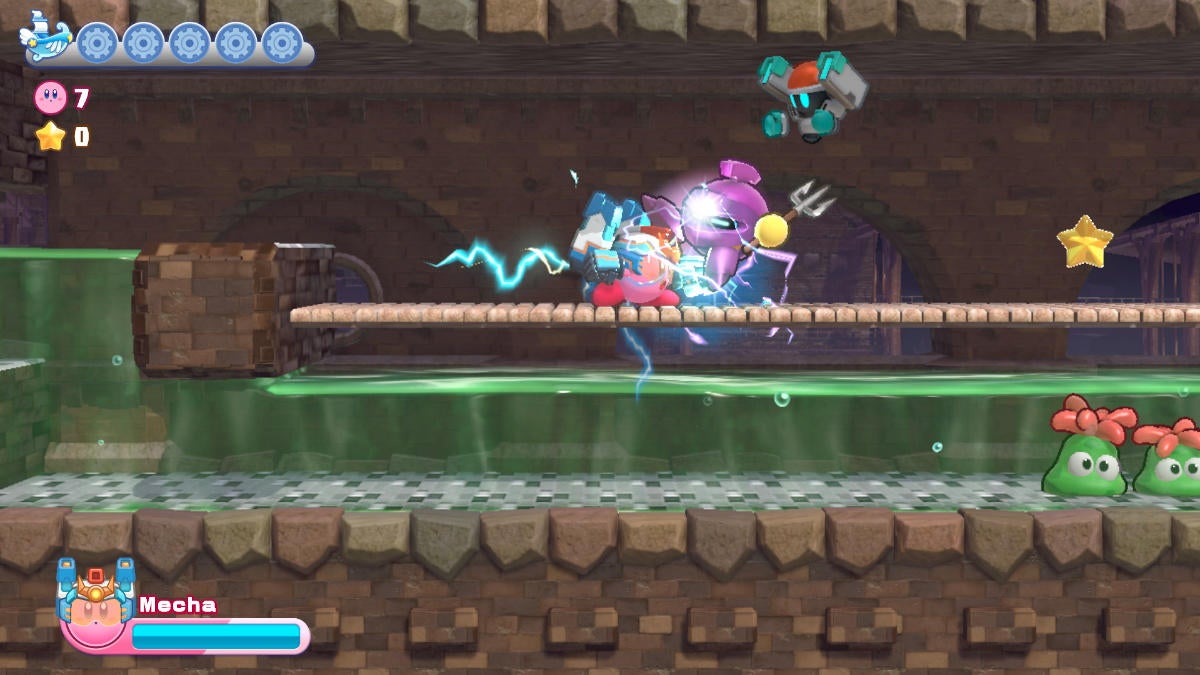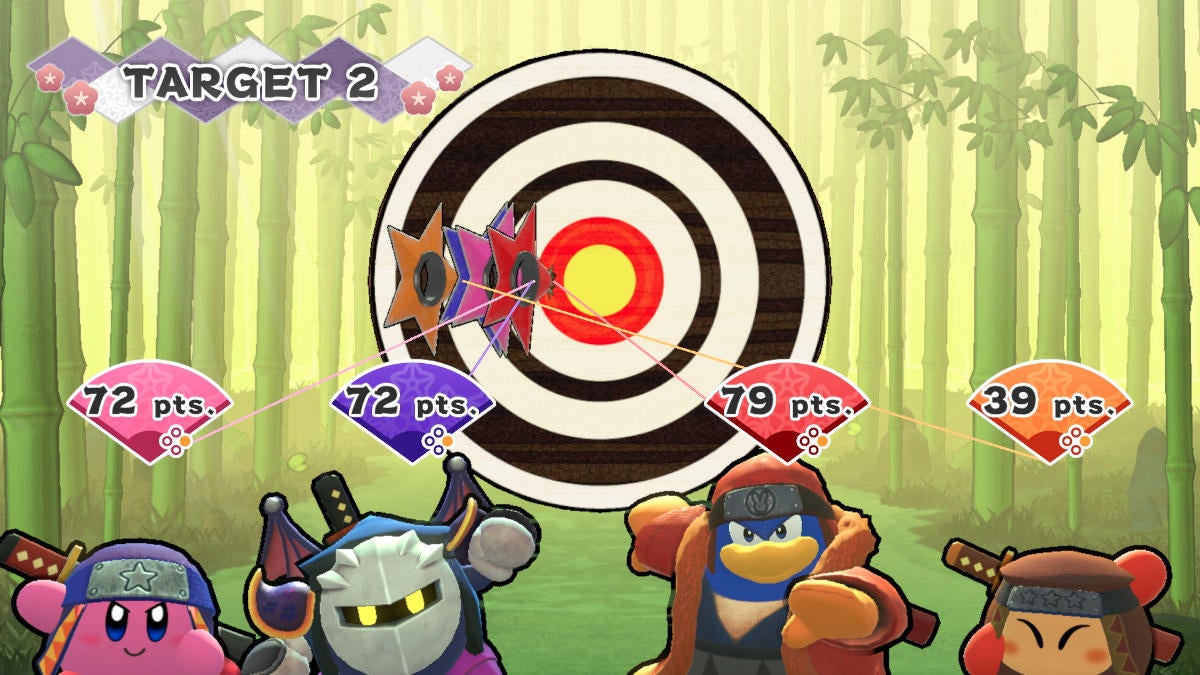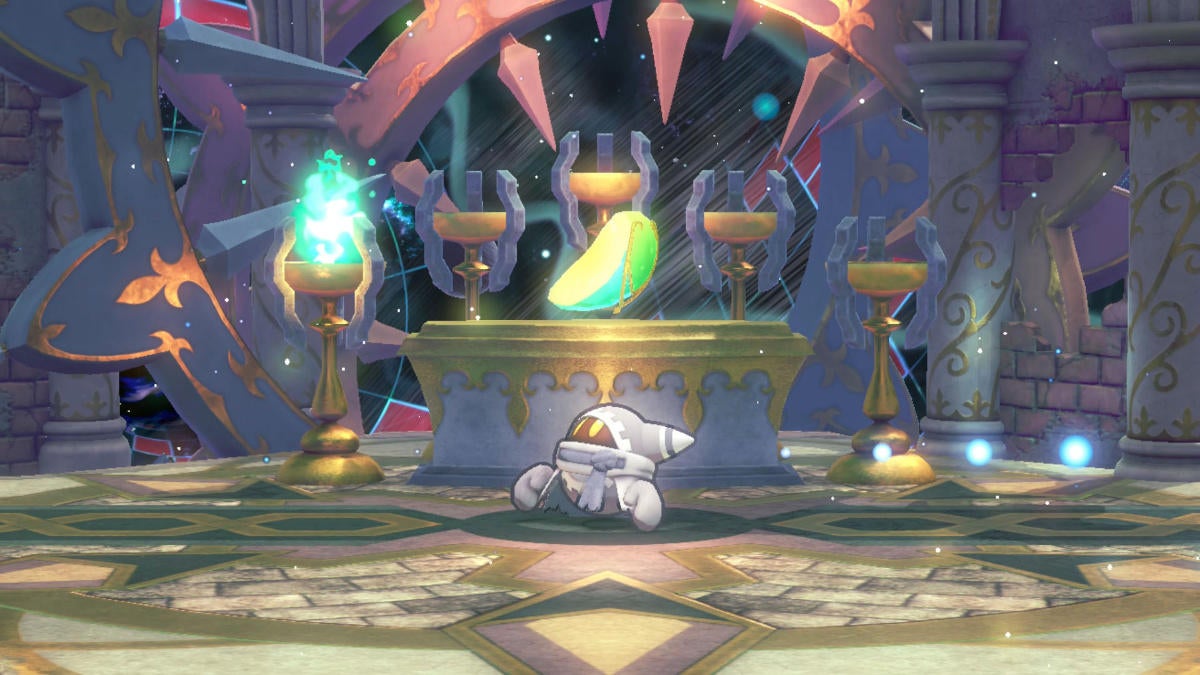Kirby's Return to Dream Land Deluxe Review: Formulaic Fun
I never played Kirby's Return to Dream Land when it released on Nintendo Wii. When it comes to Kirby games, there are basically two types: major shake-ups like Planet Robobot and Kirby and the Forgotten Land, and titles that adhere closely to the traditional formula. On Wii, I opted to purchase Kirby's Epic Yarn, because it looked like something fresh and different from the norm. Kirby's Return to Dream Land Deluxe on Nintendo Switch has given me a chance to see what I missed, and discover whether I made the right decision all those years ago.
Kirby's Return to Dream Land Deluxe is a classic style 2D platformer, putting players in the role of the denizen of Dream Land. This time around, Kirby and friends discover a crashing ship and rush to the aid of its pilot, Magolor. Magolor reveals that he cannot get back to his home planet unless the ship is repaired, inspiring Kirby and friends to race off to find the missing parts. The game's campaign features seven different worlds to explore, and players can do so solo, or with up to three friends. Player one will always take the role of Kirby, while the others will have the option of a different colored Kirby, Meta Knight, Bandana Waddle Dee, and King Dedede.

If you've ever played a traditional Kirby game before, you should have a good idea what to expect from Kirby's Return to Dream Land Deluxe. The game sticks fairly close to the formula established several decades ago, with Kirby swallowing enemies, gaining their powers, and using them to explore vibrant levels. There's also plenty of cheerful music bound to get stuck in your head. It's a formula that has served the series quite well, but it also acts as the biggest detriment to Return to Dream Land: after last year's excellent Kirby and the Forgotten Land, it felt somewhat difficult to go back to a Kirby game that's mostly by the numbers.
While Return to Dream Land lacks a bit in terms of originality, the Nintendo Switch version does build on the original Wii game with several strong additions. The game features two brand-new power-ups that did not exist in previous Kirby games: Mecha and Sand. The Mecha ability gives Kirby a suit of armor with offensive capabilities that would make War Machine jealous, while the Sand ability gives Kirby the powers of Flint Marko. Both became fast favorites for me during my time with the game, and I was impressed to see how naturally they fit with the existing abilities; they never felt shoehorned in. Last but not least, the Festival ability from Kirby Star Allies has been added, though it appears far less frequently than Mecha or Sand.

Another new addition is a hub area called Merry Magoland. Merry Magoland features a bunch of sub-games that can be played alone or with friends. There are 10 in total, and 100 different challenges to complete. By completing these challenges, or by finding special tickets hidden throughout the campaign, players can unlock special items. Players can earn things like Energy Drinks and Copy Essence to use in the campaign, but the real highlight is a huge set of masks based on Kirby characters like Rick, Coo, and Whispy Woods. The masks can be worn in both the sub-games and in the campaign, which adds a much greater incentive to unlock them. The masks don't offer anything beyond an aesthetic change, but it's a great tribute to Kirby's history, and longtime fans will want to put in the time and effort to unlock them all.
The biggest addition to the game is the new Magolor Epilogue. Picking up from the campaign's conclusion, Magolor is in pretty rough shape when the epilogue begins. Throughout each stage, players will find Magic Points, which they can then use to unlock and improve Magolor's abilities. Players have a lot of freedom when it comes to how these abilities are unlocked and upgraded, and there's a bit of a customization aspect at play; some players might opt to increase Magolor's HP, while others might focus on improving his offensive abilities. The character also handles a lot differently from the rest of the cast, making the Magolor Epilogue feel like a nice change of pace from the rest of the game. It also adds about 90-120 minutes of gameplay, depending on how much players want to put into it; in addition to regular stages, there are optional ones centered around Magolor's specific abilities.

Unfortunately, the Magolor Epilogue isn't unlocked until players complete the main campaign, which might be a bit frustrating for those that have already spent a lot of time with the Wii version of Kirby's Return to Dream Land. Completing the campaign unlocks the Magalor Epilogue, as well as an Extra Mode, which offers a much steeper difficulty level. Given that this is a port, it felt like these options should have been available from the start.
Kirby's Return to Dream Land Deluxe is a great reminder that even when HAL Laboratory sticks closely to the Kirby formula, it still manages to deliver an experience that's enjoyable for players of all-ages. The game's campaign and sub-games are a lot of fun to play, whether solo or with a group of friends. It's a lot harder to recommend for players that haven't checked out Kirby and the Forgotten Land yet, but the game still has a lot of charm, and HAL Laboratory has done an excellent job improving on the original Wii version. Kirby's Return to Dream Land Deluxe might not reinvent the wheel, but it probably won't be long before the franchise's next big experiment.
Rating: 3.5 out of 5
Kirby's Return to Dream Land Deluxe is set to release February 24th, exclusively on Nintendo Switch. The game was provided by the publisher for the purpose of this review, and it was reviewed on a Nintendo Switch OLED.